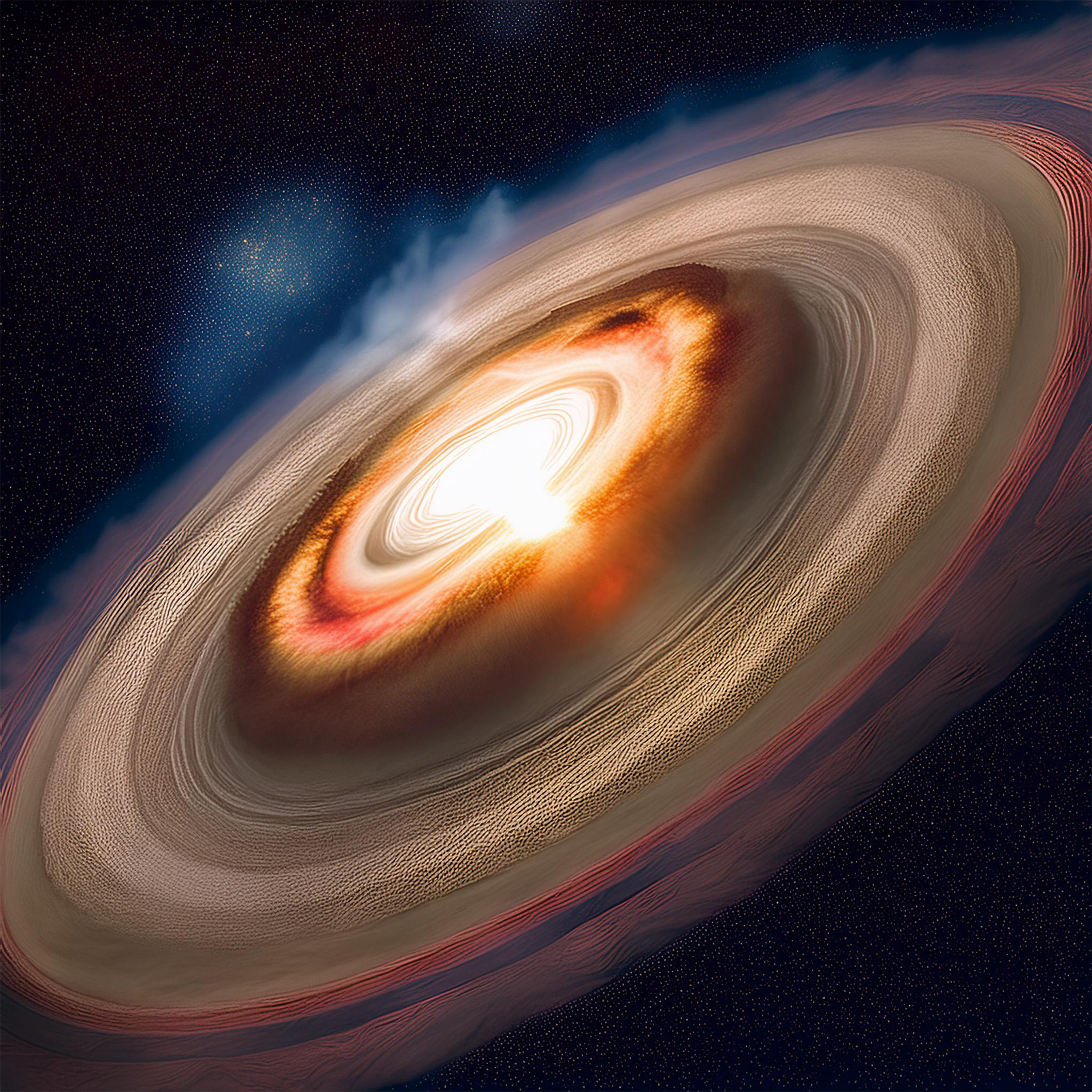Astronomers clarify how organic macromolecules are formed
Planetary scientists have long believed that the organic macromolecules that make the Earth suitable for life come from chondrites. But until now, the question has been how these chondrites -aggregated pebbles mainly known as meteorites- acquired the macromolecules. An international team of researchers from, among others, the University of Bern and TU Delft has found an explanation for this using observation-based computer models. Macromolecules can form quickly in disks of gas and dust around young stars. They are publishing their findings today in Nature Astronomy.
Combination of dust trap and radiation
In their model, the researchers combine two phenomena that have already been observed . The first is the phenomenon that in the dust disk orbiting a young star, there are regions where dust and ice accumulate. In such a dust or ice trap, the icy dust does not remain stationary, but moves up and down.
The second phenomenon involves the heavy irradiation, for example by stellar light, of simple ice mixtures. Laboratory research has indicated that very complex molecules of hundreds of atoms in size can be formed by irradiation. These molecules contain mostly carbon atoms and can be compared to black soot and graphene.
If, the researchers thought, there were dust traps that were also exposed to intense starlight, organic macromolecules might well form there. To test their hypothesis, the researchers set up a model that allowed them to calculate different conditions.
Macromolecule in few decades
The model showed that under the right conditions, the formation of macromolecules is feasible in just a few decades.
"We had hoped for this result, of course, but it was a nice surprise that it was so obvious," says Dr. Niels Ligterink. He worked at the University of Bern in Switzerland until July, and recently joined TU Delft. "I hope that peers will pay more attention to the effect of heavy radiation on complex chemical processes. Most researchers focus on relatively small organic molecules of a few dozen atoms in size, while chondrites contain mostly large macromolecules".
Elements that are important for life
Chondrites have been an important building material for Earth. In turn, the macromolecules provided elements important for life, such as carbon and nitrogen.
The production of macromolecules in dust traps appears to be efficient and can occur in many areas where planets form. There may be many exoplanets with a similar composition of organic elements as Earth. Little by little, we are getting more indications that other planets in the universe around us could very well be habitable.
Niels Ligterink
In the future, the researchers plan to study how different types of dust traps react differently to radiation and moving dust flows. This will help them learn more about the likelihood of life around different types of exoplanets and stars.


